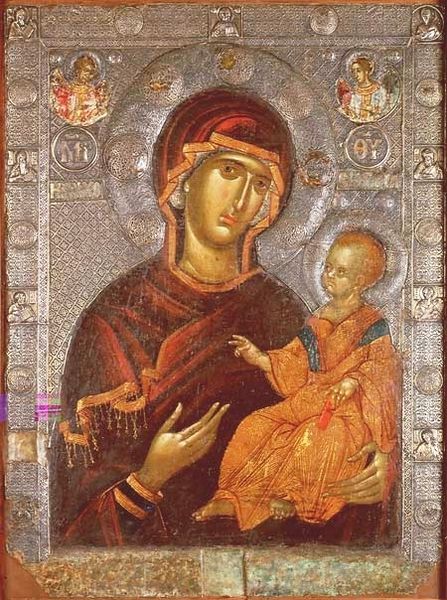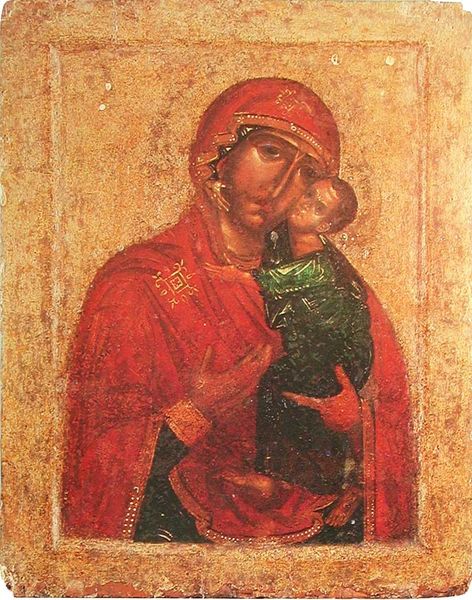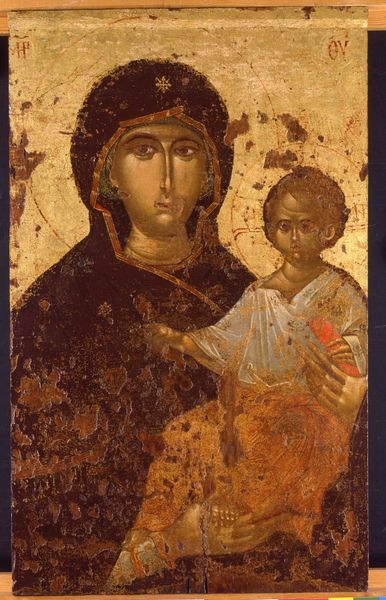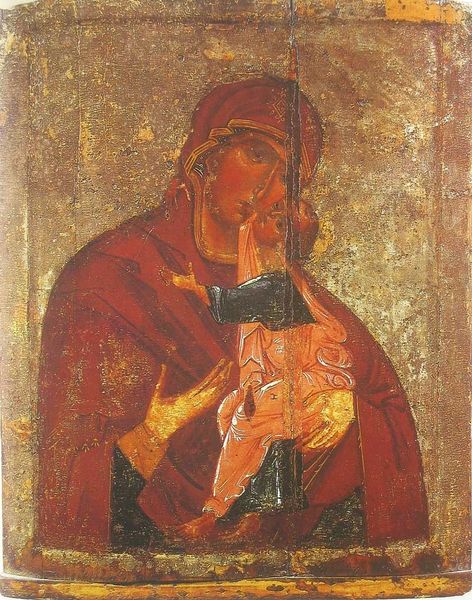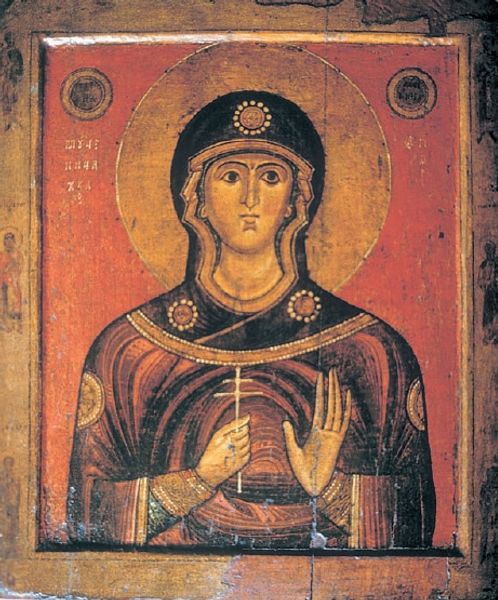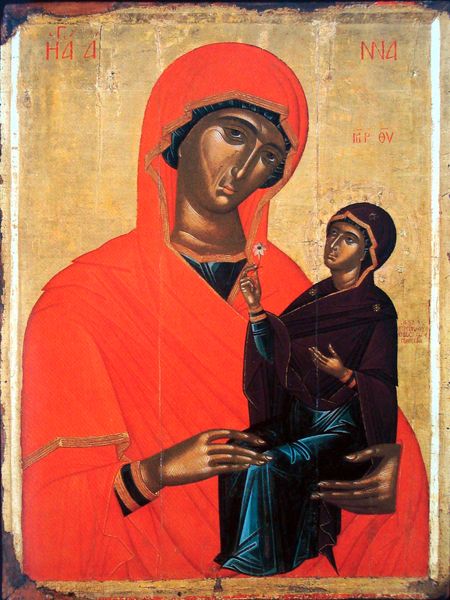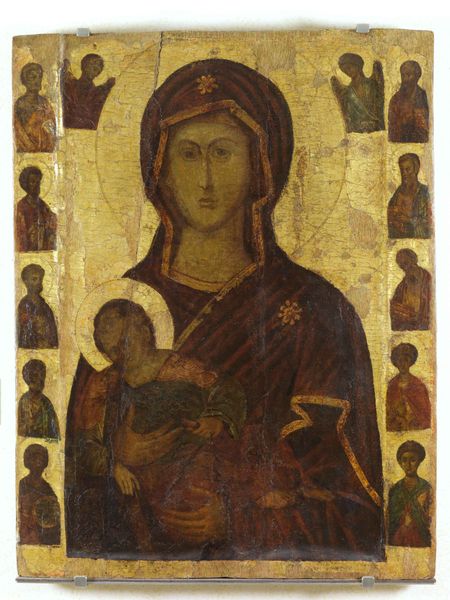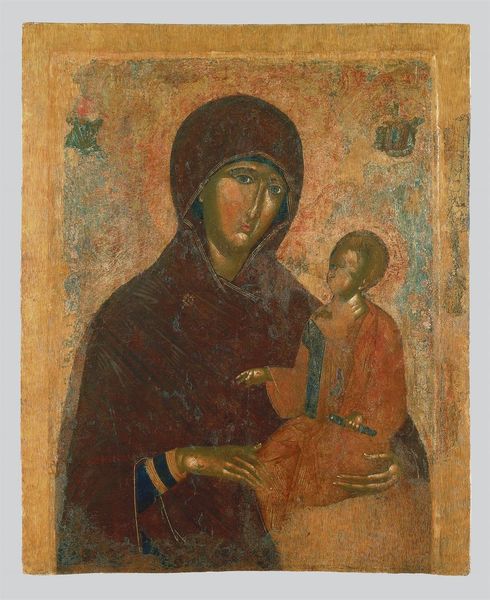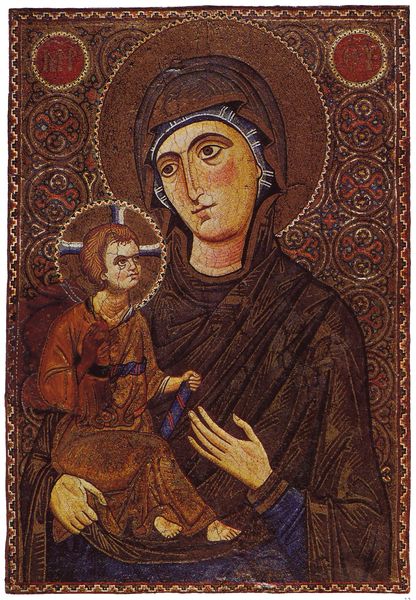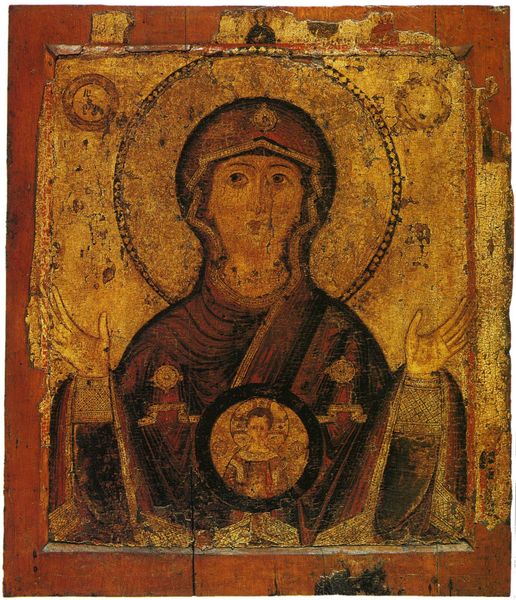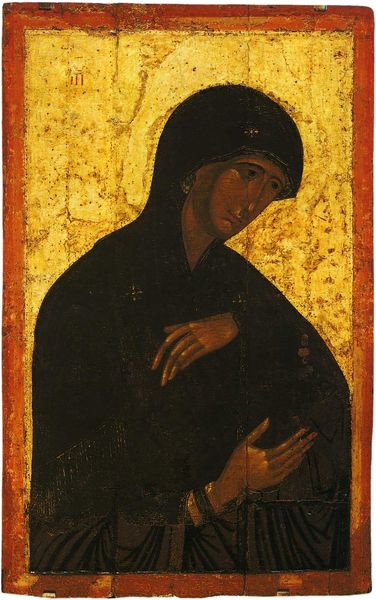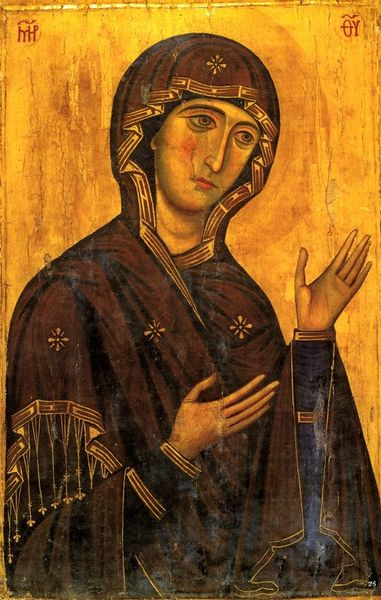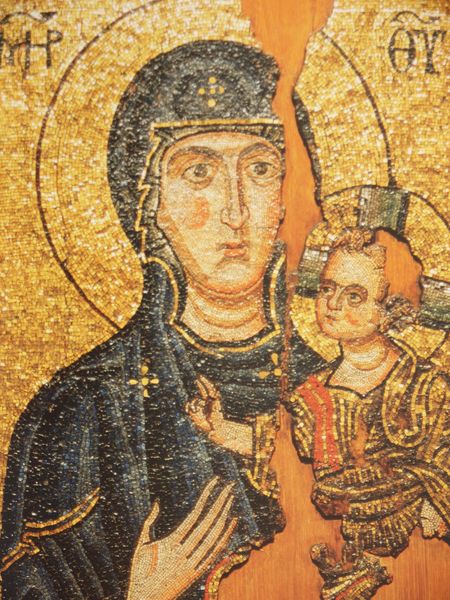
tempera, painting
#
portrait
#
byzantine-art
#
medieval
#
tempera
#
painting
#
figuration
#
oil painting
Copyright: Orthodox Icons,Fair Use
Editor: Here we have the "Hodegetria" icon, created around 1425, in tempera. The damage to the surface is very striking, it adds an additional textural layer. What draws your eye when you look at this work? Curator: Well, immediately the technique and materials. The tempera, of course, dictates a certain process – building up layers, the fast-drying pigment forcing a deliberate, planned approach. The very specific methods are very important to grasp. Editor: Could you elaborate on that? Curator: Consider where the materials originated. Pigments, for example, would have come from specific regions, influencing not just the colour palette but reflecting trade routes and resource availability. Gold leaf, if used originally, speaks volumes about economic investment in these sacred objects and who the potential audience would have been. Editor: That’s interesting, I hadn’t thought about where the materials were sourced. Curator: Exactly! Also, observe the labour involved in creating this. Tempera demands a skilled hand. What level of artistry and training do you imagine it took? That process would likely include an apprentice system, maybe even the work done collectively, further intertwining labour, material, and skill in complex ways. The artist wouldn't be an individual creating this in a vacuum. It involves many systems that are a must to be addressed when approaching Byzantine Art. Editor: So, understanding the process gives us a deeper understanding of its context? Curator: Precisely. It reveals social, economic and even technological aspects of the period far beyond simple aesthetics or religious meaning. That material reality IS part of its symbolic meaning. Editor: Thanks, it provides an unexpected path for interpretation! Curator: And hopefully you'll never see a Byzantine icon the same way again!
Comments
No comments
Be the first to comment and join the conversation on the ultimate creative platform.
